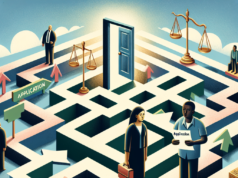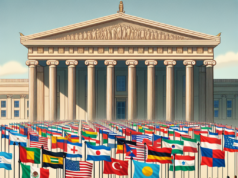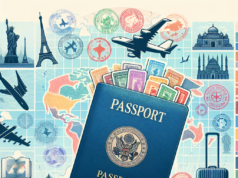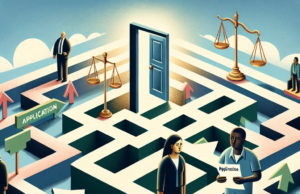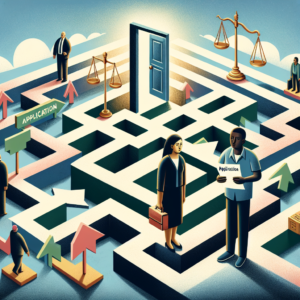
In recent years, the landscape of immigration policy in the United States has undergone significant transformations, prompting widespread debate and concern among citizens, lawmakers, and advocacy groups alike. These changes not only affect the lives of millions of immigrants but also reverberate through local economies, cultural dynamics, and legal frameworks. As the nation grapples with these shifts, it is crucial to understand the historical context, recent legislative changes, and the broader implications for society as a whole.
Understanding the Historical Context of Immigration Policies in the United States
The history of immigration policy in the United States is marked by a series of evolving laws and regulations that reflect the nation’s changing attitudes toward newcomers. From the Chinese Exclusion Act of 1882, which aimed to curb immigration from Asia, to the Immigration and Nationality Act of 1965, which abolished racially discriminatory quotas, the U.S. has oscillated between welcoming immigrants and imposing restrictions. The post-9/11 era saw a tightening of immigration controls, driven by national security concerns, while the Great Recession of 2008 further complicated the discourse around immigration, as economic anxieties fueled anti-immigrant sentiment. Understanding this historical backdrop is essential for contextualizing the recent shifts in immigration policy and their implications for American society.
Key Legislative Changes: A Comprehensive Overview of Recent Immigration Reforms
In the past few years, several key legislative changes have reshaped the immigration landscape in the United States. The Biden administration has sought to reverse many policies implemented during the Trump era, including the controversial “Remain in Mexico” policy and the public charge rule, which penalized immigrants for using public benefits. Additionally, the introduction of the U.S. Citizenship Act of 2021 aimed to provide a pathway to citizenship for undocumented immigrants and reform the visa system. However, these proposals have faced significant opposition in Congress, leading to a patchwork of state-level laws that further complicate the immigration process. As these legislative efforts continue to evolve, the implications for both immigrants and the broader society remain profound.
The Economic Implications of Immigration Policy Shifts on Local Communities
The economic ramifications of immigration policy changes are felt acutely in local communities across the United States. Immigrants play a vital role in the labor market, filling essential positions in sectors such as agriculture, healthcare, and technology. Recent policy shifts, including increased deportations and stricter visa regulations, have led to labor shortages in many industries, driving up costs and impacting productivity. Conversely, more inclusive immigration policies could stimulate economic growth by attracting skilled workers and fostering innovation. Local economies that embrace diversity often experience increased entrepreneurship and job creation, highlighting the need for balanced immigration policies that recognize the contributions of immigrants to the American economy.
Social and Cultural Effects: How Immigration Changes Shape Our National Identity
The ongoing changes in immigration policy also have profound social and cultural implications, influencing the very fabric of American identity. As the nation becomes increasingly diverse, the integration of immigrants into society presents both challenges and opportunities. Cultural exchanges enrich communities, fostering understanding and collaboration among different ethnic groups. However, rising anti-immigrant sentiment and xenophobia can lead to social fragmentation and conflict. The narrative surrounding immigration is often polarized, with some viewing it as a threat to national identity while others celebrate it as a cornerstone of American values. As immigration policies evolve, they will continue to shape the discourse around what it means to be American in an increasingly globalized world.
Legal Challenges and Controversies Surrounding New Immigration Regulations
The recent shifts in immigration policy have not been without controversy, leading to a series of legal challenges that underscore the contentious nature of this issue. Advocacy groups have frequently taken legal action against new regulations, arguing that they violate constitutional rights or fail to adhere to established legal standards. For instance, lawsuits have been filed against the Biden administration’s attempts to roll back certain Trump-era policies, as well as against state-level laws perceived to be discriminatory. These legal battles highlight the complexities of immigration law and the ongoing struggle to balance enforcement with humanitarian considerations. As courts weigh in on these matters, the outcomes will have lasting implications for the future of immigration policy in the United States.
Looking Ahead: Future Trends in Immigration Policy and Their Potential Impact
As the United States moves forward, several trends are likely to shape the future of immigration policy. The increasing polarization of the immigration debate suggests that legislative solutions may remain elusive, with potential for further executive actions to address pressing issues. Additionally, demographic shifts, such as an aging population and declining birth rates, may necessitate a reevaluation of immigration policies to ensure a sustainable workforce. The rise of technology and remote work could also influence immigration patterns, as skilled workers seek opportunities in a more interconnected world. Ultimately, the trajectory of immigration policy will depend on the ability of lawmakers to navigate these complexities while addressing the needs and concerns of both immigrants and the broader American public.
In conclusion, the recent shifts in immigration policy in the United States represent a critical juncture in the nation’s history. As lawmakers grapple with the implications of these changes, it is essential for all stakeholders—citizens, immigrants, and policymakers—to engage in constructive dialogue that recognizes the multifaceted nature of immigration. By understanding the historical context, economic impacts, and social dynamics at play, the nation can work towards a more equitable and effective immigration system that reflects its core values of diversity and inclusion.

